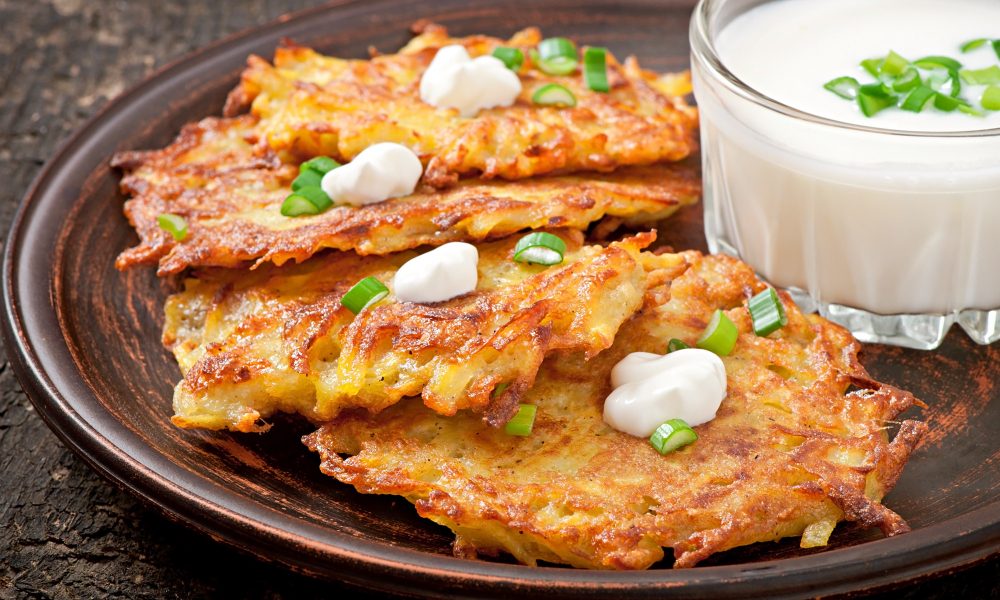
Latkes vs. Kugel: 5 Key Differences for Food Lovers

If you have ever found yourself at a Jewish holiday table staring at two dishes that seem oddly familiar, crispy potato latkes and golden-baked kugel, you are not alone. They both involve potatoes. And they both come from deep roots in Ashkenazi cooking. But that is where the overlap ends.
These two dishes bring very different things to the table. From how they are cooked to when they are served, latkes and kugel each have their own vibe, purpose, and personality.
Here are five big ways they differ so you can stop confusing your casseroles and pancakes once and for all:
Shape and Texture
Latkes are all about crunch. They are individual pancakes, usually pan-fried in hot oil, with lacy, crispy edges and a tender, salty center. Each one is its own little golden masterpiece, straight from the skillet to your plate. You eat them fresh and hot, usually with a dollop of sour cream or a spoonful of applesauce.
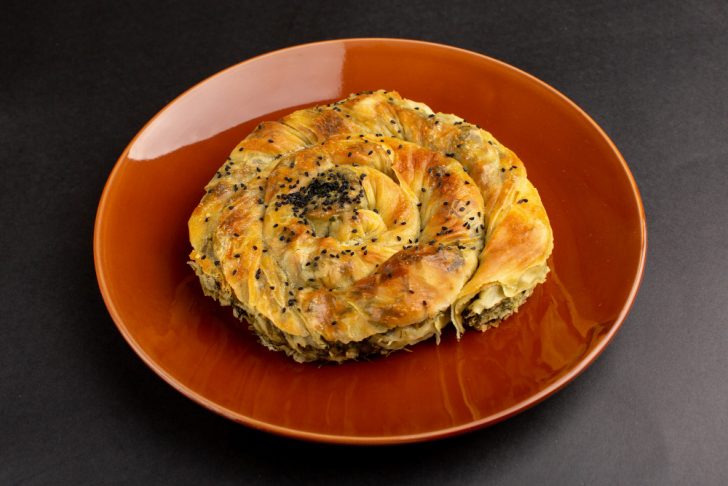
Freepik / Unlike latkes, kugel is baked as one big dish, then cut into squares. Potato kugel has a soft, pudding-like middle, with just the outer edges browning up in the oven.
It is not supposed to be crispy all over. Think cozy casserole, not crispy patty. It is made to serve a crowd, and it holds its form whether warm or cold.
Cooking Method
The way these two dishes hit the heat is where their personalities really split. Latkes are pan-fried, and that frying is no accident. The tradition of cooking latkes in oil comes straight from the Hanukkah story, which centers on a miracle involving a tiny bit of oil that burned for eight days.
Kugel is an oven-baked situation. You mix everything together, pour it into a greased dish, and let the heat do its thing. There is no flipping, no sizzling oil, no crispy-on-contact action. Just a slow, even bake that brings out the richness of the eggs and potatoes.
So, it is low-maintenance and hands-off, more like prepping lasagna than making pancakes.
Ingredients and Prep Style
At first glance, the ingredients appear to be the same: potatoes, onions, eggs, and possibly some flour or matzo meal. But don’t be fooled. Latkes are grated, squeezed dry, mixed, and fried in batches. The trick is to keep them crisp, which means working fast and keeping the oil hot. It is a hands-on, made-to-order dish.
Kugel prep is less intense. You shred the potatoes, mix them with eggs and oil, and then pour the mixture into a pan to bake. Recipes often call for more eggs or even baking powder to give it lift. Some versions include schmaltz (chicken fat) for a deeper flavor. You pop it in the oven and forget it for an hour. So, it is more of a set-it-and-serve-it kind of dish.
Cultural Roles and When They are Served
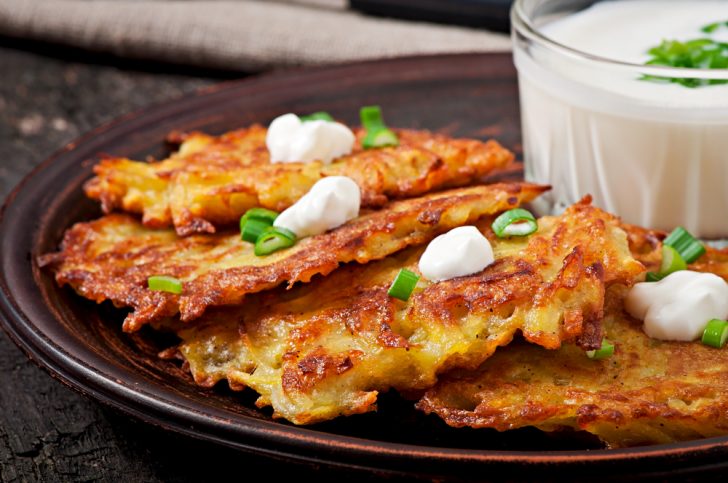
Freepik / Latkes belong to Hanukkah like jelly donuts belong to a doughnut shop. Their whole identity is tied to that one holiday and its story about oil.
You might see them at other times, but they are the star of Hanukkah, no question.
However, kugel doesn’t stick to one holiday. It is a go-to for Shabbat dinners and shows up on tables during Passover, Rosh Hashanah, and everything in between. Potato kugel is a Shabbat classic, while sweet noodle kugel often plays the dessert or side dish role on festive occasions.
Sweet vs. Savory
Latkes rarely go sweet. Sure, applesauce adds some sweetness, but the latke itself is always savory, with a salty, oniony, and crispy perfection. You won’t find raisins or sugar in the batter, and if you do, run.
On the other hand, kugel is a wildcard. There is the savory potato version, which can feel like a cousin to the latke. But there is also noodle kugel, which often includes sugar, cinnamon, raisins, and even pineapple. It can be closer to bread pudding than anything else.
More inFood Adventures
-
`
How Good Is Street Food in South Korea?
Street food in South Korea is a way of life. You will see students grabbing skewers after class, office workers stopping...
July 17, 2025 -
`
Iconic American Vogue Editor-in-Chief Anna Wintour Steps Down After 37 Years
After 37 years at the helm of American Vogue, Anna Wintour has officially stepped down as editor-in-chief. The 75-year-old British editor...
July 10, 2025 -
`
Here’s Why Psychedelic Healing Doesn’t Need Big Pharma
Community is the heart of real psychedelic healing. Not sterile clinics. Not white lab coats. And, of course, not a billion-dollar...
July 4, 2025 -
`
Visit Tongass National Forest, the World’s Largest Temperate Rainforest
Tongass National Forest is where wild meets massive. It is the largest temperate rainforest on Earth, spreading across a jaw-dropping 16.7...
June 26, 2025 -
`
Luxury Superyacht Foodie Documentary Set for Premiere in Autumn 2025
Superyacht Foodie is setting sail into uncharted waters with a bold new documentary. “Superyacht Foodie Adventures” premieres in autumn 2025 and...
June 19, 2025 -
`
5 Doable Ways of Preventing High Blood Pressure (Hypertension)
Hypertension is sneaky. It usually shows no symptoms until it has done real damage. That is what makes it dangerous. If...
June 12, 2025 -
`
Nevada High School Student Arrested for Bringing Gun to Campus
In Nevada, a 10th-grade student at Community High School was arrested on Thursday afternoon after allegedly bringing a gun onto school...
June 6, 2025 -
`
Retirement Can Wreak Havoc on Your Mental Health. Here’s The Fix
Retirement sounds like a dream: No more meetings, no more commutes, and finally, time to do whatever you want. But retirement...
May 29, 2025 -
`
5 Must-Visit Spots in Peru for a Real Food Adventure
A real food adventure starts the second you land in Peru. This place doesn’t just serve food. It tells stories through...
May 22, 2025

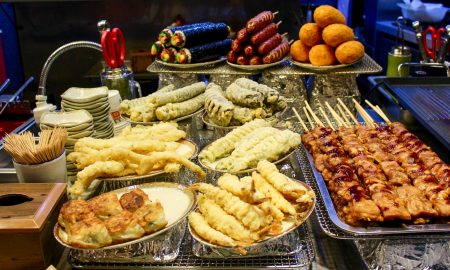







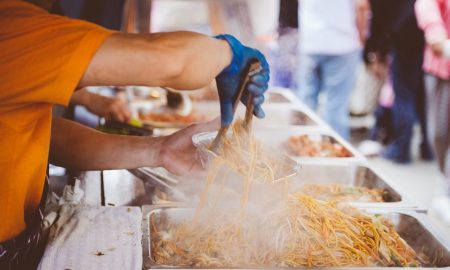





You must be logged in to post a comment Login